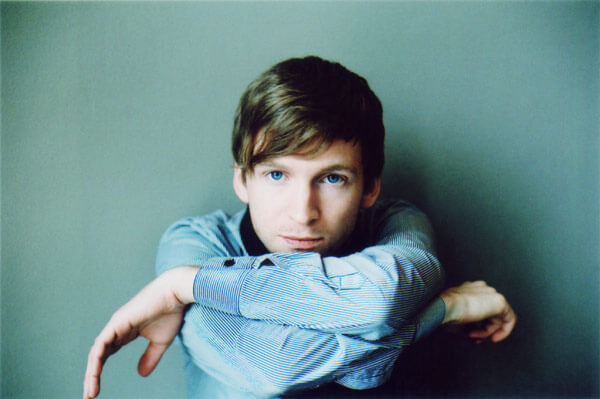![]() On a sweltering Brooklyn summer night, a crowd of young hip New Yorkers sweated through an almost hallucinogenic concert by Icelandic composer, producer, and multi-instrumentalist Ólafur Arnalds. The sold-out show on Tuesday July 16, 2013 was held at Glasslands in South Williamsburg, Brooklyn. A converted warehouse and former community art space “turned psychedelic venue partyhaus,” the design and artistry of Glasslands presents the epitome of DIY creative eccentricity.
On a sweltering Brooklyn summer night, a crowd of young hip New Yorkers sweated through an almost hallucinogenic concert by Icelandic composer, producer, and multi-instrumentalist Ólafur Arnalds. The sold-out show on Tuesday July 16, 2013 was held at Glasslands in South Williamsburg, Brooklyn. A converted warehouse and former community art space “turned psychedelic venue partyhaus,” the design and artistry of Glasslands presents the epitome of DIY creative eccentricity.

Icelandic composer, producer, and performer Ólafur Arnalds (photo credit: Ólafur Arnalds promo)
The opening act was Vio/Miré, a chamber folk ensemble from Providence, Rhode Island. The project is lead by Brendon Glasson on vocals and guitar, and for this evening’s performance included two additional musicians on piano and trombone. The sound was intimate and precious, almost to a fault. Glasson’s measured voice (with an ache and resonance almost reminiscent of Bright Eyes’s Conor Oberst) and descriptive atmospheric verse are compelling and the trombone a winning addition, yet nothing in the ensemble possessed enough energy to fill the room.
It was during Vio/Miré that the heat began to steal the show and become the metanarrative to each person’s experience of the show. As the AC was too loud to be able to hear the delicate instrumentation of both Vio/Miré and Ólafur Arnalds, the crowd began to slowly wilt in the East Coast heat wave. A fantastic reprieve of AC came while the stage was set for Ólafur Arnalds, who performed in sandals and shorts for the first time in his career and repeatedly remarked on the oppressive and unparalleled temperature in the room. Some people left, while other withstood the near delirium, wiping sweat off their brow, rhapsodically compelled by the music.
Arnalds is a force, a shapeshifter who pushes himself in new directions. At 26 years old, he has already composed and released eight albums, four film scores, a television series score, toured with major groups such as Sigur Rós, and recently performed a sold out show with Britten Sinfonia at the Barbican in London. Arnalds’ music, combining piano and strings and increasingly the use of ambient electronics and beats, crosses genres with elements of classical, pop and electronic. His most recent album For Now I Am Winter was orchestrally arranged by Nico Muhly and features his first collaboration with a vocalist, Arnór Dan Arnarson from the band Agent Fresco.
Uncommon for a composer whose influences trace from Chopin to American minimalists such as Philip Glass, his background includes being a drummer for the metal/hardcore group Fighting Shit. Two of his previous albums, Found Songs in 2009 and Living Room Songs in 2011, were released for free online to his fans and were the result of a challenge to write and record one song per week. He invites his listeners in, through opening up his artistic process with live videos, participating in Reddit unmoderated interviews, and otherwise adopting social media tools that facilitate todays remarkable transparency and personal access.

Ólafur Arnalds (photo credit: Artistdata)
For this evening’s performance Arnalds opened the show by asking, “Can you sing for me?” An experiment he’s contrasted with audiences across the globe, Arnalds asks the audience to sing a sustained note he records and incorporates into the opening song Pú ert Jörðin. With this participatory gesture and his warm joking manner (referring to his iPad as “this thing I like to call Mr. Jobs”), he instantly endeared the audience. Arnalds, on piano and electronics, was joined by the talented Viktor Arnason on violin and Rubin Kodheli on cello. The songs alternated between skillfully tender and halcyon moments highlighting the piano or strings, to impassioned combinations of the three musicians mixed with pulsing, driven electronic beats. At times the electronic additions seamlessly added gravity and excitement to the compositions, but at other times it felt as though these elements were overstated, in an awkward and heavy-handed mix unheard in the studio releases.
Highlights included the violin composition 3326 expertly played by Arnason on solo violin and the encore Lag fyrir Ömmu played on piano by Arnolds. Lag fyrir Ömmu (Song For Grandma) is an ode to the woman “who was force-feeding me Chopin when I only wanted to hear punk music.” Arnolds had announced that he would not put the guys through playing any longer in the heat, but as the song neared its completion, Kodheli joined in softly from behind the stage.
Arnolds is a deft and dexterous musician and composer whose sensitivity to his instruments facilitates a heightened intimacy and delicacy with each note. His work is notably cinematic, and some of the qualities that most attract his listeners others may find border on overly sentimental or repetitive. His music is built upon the proposition of metamorphosis –a lyrical unraveling of sorrow that always possesses a glint of hope. It is music to mourn to, that works to never belie the beauty and inevitability of transformation.























